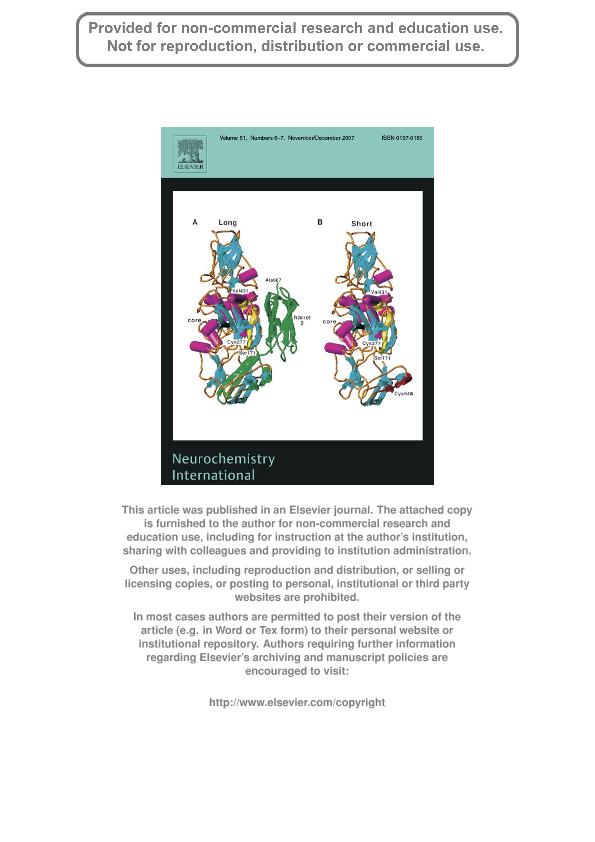Artículo
Effect of nitroxyl on the hamster retinal nitridergic pathway
Sáenz, Daniel A.; Bari, Sara Elizabeth ; Salido, Ezequiel Martín
; Salido, Ezequiel Martín ; Chianelli, Mónica Silvia
; Chianelli, Mónica Silvia ; Rosenstein, Ruth Estela
; Rosenstein, Ruth Estela
 ; Salido, Ezequiel Martín
; Salido, Ezequiel Martín ; Chianelli, Mónica Silvia
; Chianelli, Mónica Silvia ; Rosenstein, Ruth Estela
; Rosenstein, Ruth Estela
Fecha de publicación:
11/2007
Editorial:
Pergamon-Elsevier Science Ltd
Revista:
Neurochemistry International
ISSN:
0197-0186
Idioma:
Inglés
Tipo de recurso:
Artículo publicado
Clasificación temática:
Resumen
There is a growing body of evidence on the role of nitric oxide (NO) in retinal physiology. Recently, interest has developed in the functional role of an alternative redox form of NO, namely nitroxyl (HNO/NO), because it is formed by a number of diverse biochemical reactions. The aim of the present report was to comparatively analyze the effect of HNO and NO on the retinal nitridergic pathway in the golden hamster. For this purpose, sodium trioxodinitrate (Angeli’s salt) and diethylammonium (Z)-1-(N,N-diethylamino)diazen-1-ium-1,2-diolate (DEA/NO) were used as HNO and NO releasers, respectively. Angeli’s salt and DEA/NO significantly decreased nitric oxide synthase activity. In addition, Angeli’s salt (but not DEA/NO) significantly decreased L-arginine uptake. DEA/NO significantly increased cGMP accumulation at low micromolar concentrations, while Angeli’s salt affected this parameter with a threshold concentration of 200 mM. Although Angeli’s salt and DEA/NO significantly diminished reduced glutathione and protein thiol levels in a similar way, DEA/NO was significantly more effective than AS in increasing Snitrosothiol levels. None of these compounds increased retinal lipid peroxidation. These results suggest that HNO could regulate the hamster retinal nitridergic pathway by acting through a mechanism that only partly overlaps with that involved in NO response.
Palabras clave:
nitridergic pathway
,
nitroxyl
,
Angeli´s salt
,
hamster
Archivos asociados
Licencia
Identificadores
Colecciones
Articulos(CEFYBO)
Articulos de CENTRO DE ESTUDIOS FARMACOLOGICOS Y BOTANICOS
Articulos de CENTRO DE ESTUDIOS FARMACOLOGICOS Y BOTANICOS
Articulos(INQUIMAE)
Articulos de INST.D/QUIM FIS D/L MATERIALES MEDIOAMB Y ENERGIA
Articulos de INST.D/QUIM FIS D/L MATERIALES MEDIOAMB Y ENERGIA
Citación
Sáenz, Daniel A.; Bari, Sara Elizabeth; Salido, Ezequiel Martín; Chianelli, Mónica Silvia; Rosenstein, Ruth Estela; Effect of nitroxyl on the hamster retinal nitridergic pathway; Pergamon-Elsevier Science Ltd; Neurochemistry International; 51; 6-7; 11-2007; 424-432
Compartir
Altmétricas



